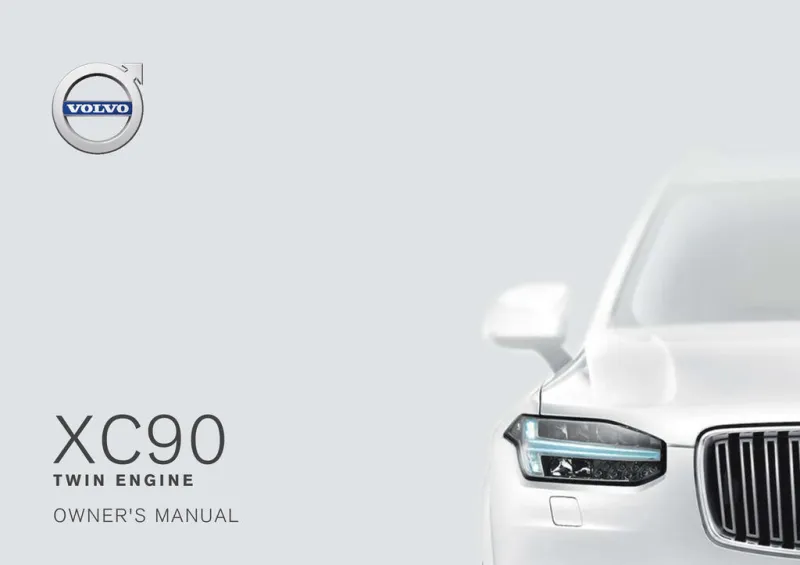2018 Volvo Xc90 Twin Engine Owner's Manual

Table of Contents
2018 Volvo Xc90 Twin Engine Overview
Introduction
The 2018 Volvo XC90 Twin Engine is a stunning embodiment of Scandinavian luxury, sophistication, and eco-conscious technology. With its sleek yet robust design, this plug-in hybrid SUV offers remarkable performance while being mindful of the environment. Built on a modular platform, the XC90 seamlessly combines versatility, practicality, and advanced safety features, making it an optimal choice for families and adventurous drivers alike.
Powertrains
At the heart of the XC90 Twin Engine lies a powerful T8 plug-in hybrid powertrain, which harmoniously integrates a supercharged and turbocharged 2.0-liter inline-four engine with an electric motor. This combination produces a stellar output of 400 horsepower and 472 lb-ft of torque, allowing the XC90 to accelerate from 0 to 60 mph in just 5.3 seconds. The vehicle features an 8-speed automatic transmission and an All-Wheel Drive (AWD) system, ensuring superior handling in various driving conditions. With an electric-only range of approximately 14 miles, it offers a green alternative for short commutes while still providing the robust capabilities of a luxury SUV.
Trims
The 2018 XC90 Twin Engine is available in several well-appointed trims: Momentum, R-Design, and Inscription. Each trim level presents a distinct blend of luxury and functionality. The Momentum trim emphasizes innovative technology and comfortable seating, while the R-Design adds a sporty flair with its unique design accents. The Inscription trim is the pinnacle of luxury, featuring premium materials and advanced features like heated and ventilated seats, ambient lighting, and a state-of-the-art audio system.
Features
This model comes equipped with an array of premium features, including Volvo's Sensus infotainment system with a 9-inch touchscreen display, advanced navigation, Apple CarPlay, and Android Auto integration. Safety technologies such as Pilot Assist, City Safety Collision Avoidance, and Run-off Road Protection are standard, underpinning Volvo's commitment to passenger safety. The spacious interior offers comfortable seating for up to seven passengers, alongside ample cargo space, making it ideal for both city driving and road trips.
Owner's Manual
The owner's manual for the 2018 Volvo XC90 Twin Engine serves as an invaluable resource, providing essential information regarding the vehicle’s features, maintenance schedules, and operating instructions. It offers guidance on maximizing the plug-in hybrid capabilities, navigating the Sensus system, and understanding the safety technologies that come standard with the XC90, ensuring drivers can make the most of their luxury SUV experience.
User manual download
The Volvo Xc90 Twin Engine owner manual for the 2018 model year is to be found in PDF downloadable format on this page. The owner manual for the model year 2018 is free and in English, but the repair manuals are usually not easy to get and may cost more.
Manual Questions
Fill the form below and someone will help you!
